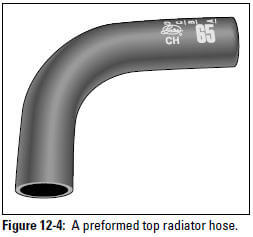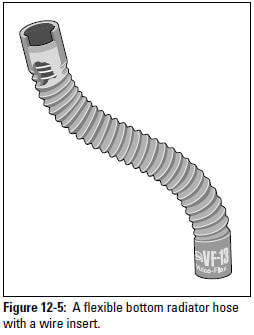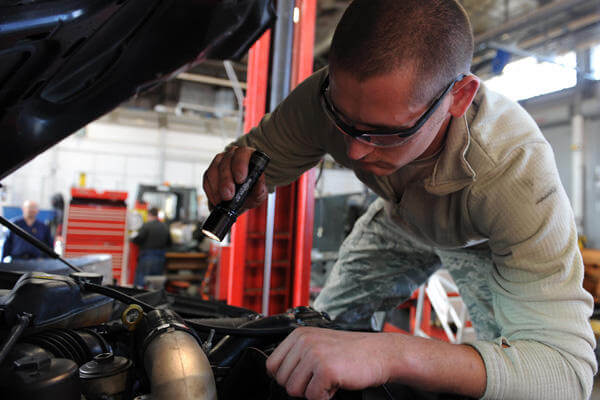Replacing hoses is usually pretty easy and inexpensive, with two caveats:
- Make sure that both ends of the hose are accessible. Some heater hoses disappear through the firewall and under the dashboard. I'd much rather pay a mechanic than hang upside down in a cramped space while I locate and replace one of these hoses.
- Never attempt to replace a hose connected to your air conditioner. Air conditioners and their hoses contain refrigerant under pressure that can blind you. If you have any problems with your air conditioner or itshoses, seek professional help.
Tip: If your service facility doesn't have an air conditioner specialist on staff, consider going directly to the specialist to avoid paying for the time it would take your service facility to deliver your vehicle to the specialistand then pick it up.
Buying the Right Hose
Before you can replace a hose, you need to visit the parts department at your dealership or an auto supply store to buy the proper type, diameter, and length of hose for your vehicle.

|
Tip: If possible, while you're still in the parking lot wherever you bought it, check the new hose against your old hose. If the hose doesn't seem to be the same size and shape as your old one, take it back in and exchange it. If you can't drive your vehicle to the store, remove the hose and take it with you so that the parts department at the store can match it.
If you can't bring the vehicle or the hose with you, here's how to find the right replacement for the vehicle's make, model, and year without a sample on hand:
- If it's a top radiator hose: Don't get a radiator hose that has wire inside it. Radiator hoses have to bend to fit properly between the radiator and whatever they lead to. Some hoses are straight tubes, with wire coiled inside the rubber casing. These are called universal hoses; they're designed to bend to fit many cars. Often, the wire breaks or works its way through the top covering of the hose, causing the hose to leak. The kind of hose to look for is called a preformed hose, shown in Figure 12-4, which is made with the proper bend already in it and no wire inside the rubber.
The hose should be squeezable — another reason that you don't want a top radiator hose with wire inside. This way, if you have problems with your cooling system, you can squeeze the hose to see whether the system is operating under pressure.
Caution: A dangerously pressurized hose that's hard to squeeze warns you not to remove the radiator cap until the car cools down and the pressure is reduced.
- If it's a bottom radiator hose: The hose must have a wire coil inside it (see Figure 12-5) to help it keep its shape and withstand the vacuum caused by the water pump drawing water out of the radiator.
- If it's any other kind of hose: Make a photocopy of the Specifications Record in Appendix B for each of your vehicles and enter the following information on it. Then take it to the auto supply store whenever you have to buy hoses and other parts.
- The make, model, and year of your vehicle: The auto supply store may also need to know the size and type of your engine and whether the vehicle has air-conditioning.
- The type of hose, if you know it: For example, a heater hose or vacuum hose.
- What part(s) the hose connects to
- The diameter, color, and length of the hose: Most hoses are sold by their inside diameter (see Figure 12-6), so you may have to disconnect one end of the hose, measure the inside diameter, and reconnect it if you're going to drive to the store.


From Auto Repair for Dummies, copyright © 2009 by Wiley Publishing, Inc., Indianapolis, Indiana. Used by arrangement with John Wiley & Sons, Inc.










